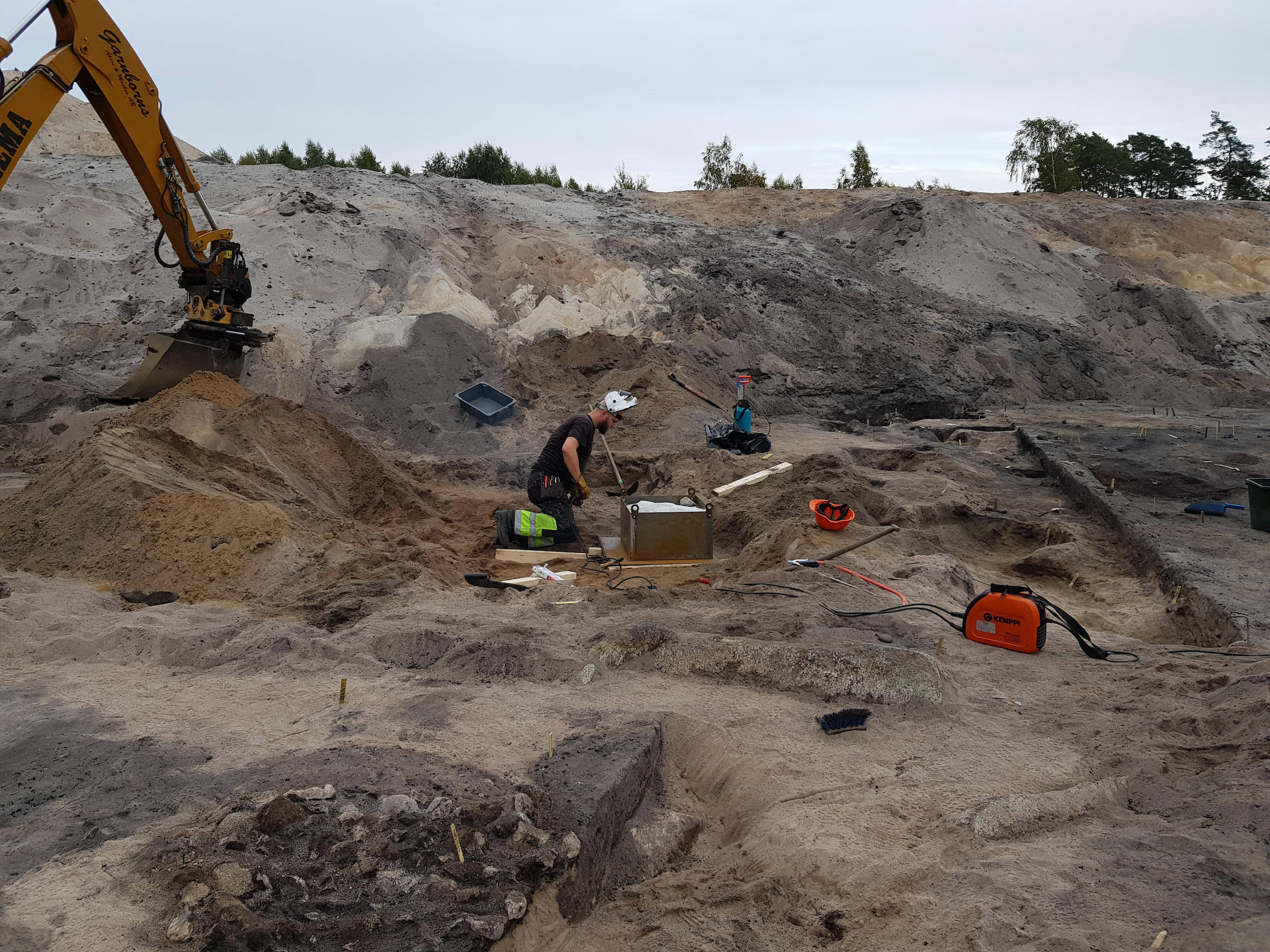Stone Age dog may have been buried with its master
The "good boy" was buried in the middle of a Stone Age settlement.

Archaeologists have discovered the remains of a Stone Age dog that was buried alongside a human in a settlement in what is now southern Sweden. That honorary position suggests the dog wasn't wild; rather, it likely lived amongst people about 8,400 years ago.
"This is one of the oldest grave finds of dogs in the country," osteologist Ola Magnell with The Archaeologists with National Historical Museums, in Lund, Sweden said in a statement from Blekinge Museum. "The dog is well preserved and the fact that it is buried in the middle of the Stone Age settlement is unique."
Oftentimes, people from this time period were buried with valuable or sentimental objects, so perhaps the dog fit into one of those categories, the archaeologists said.
Related: Back to the Stone Age: 17 key milestones in Paleolithic life
Excavators found the burial in Ljungaviken, a neighborhood in the municipality of Sölvesborg, at an archaeological site that researchers have been studying for the past 10 years. Already, crews have found the remains of about 60 houses there, as well as pieces of flint and fireplaces, Carl Persson, the project manager of the excavation, told SVT Nyheter, the Swedish national public television broadcaster.
This settlement was abandoned soon after this person and dog were laid to rest. About 8,400 years ago, rising sea levels flooded the area. Those waters dumped layers of mud and sand over the site, burying it — but also protecting it — over time.
Archaeologists have been digging through this muck to reach the settlement beneath it, meaning that this burial and the other traces of Stone Age life are seeing the light of day for the first time in more than eight millennia. The team hasn't fully excavated the dog yet, but plans to soon.
Get the world’s most fascinating discoveries delivered straight to your inbox.

"We hope to be able to lift the whole dog up in preparations, i.e. with soil and everything, and continue the investigations at [Blekinge Museum]," Persson said in the statement (translated from Swedish with Google Translate). He added that "a find like this makes you feel even closer to the people who lived here. A buried dog somehow shows how similar we are over the millennia — the same feelings of grief and loss." (Of note, it's unclear whether the dog died a natural death, or whether it was killed to be buried with its human. An analysis of its remains may reveal this mystery.)
Dogs were likely domesticated multiple times in different cultures, but have been living with humans since at least 33,000 years ago, according to a canine skull found in Siberia, a 2013 study published in the journal PLOS One found. An analysis of the Siberian skull showed that its DNA was more similar to modern dogs than it was to wolves, coyotes and prehistoric canid species, Live Science previously reported.
The new discovery is hardly the first archaeological evidence that ancient humans cared for their "good boys." A 14,000-year-old burial in western Germany may be the oldest known grave to contain both dogs and people, a 2018 study in the Journal of Archaeological Science found. The canid remains suggest the pup was young and sick when it died, but its people apparently still developed an emotional bond with it, the researchers of that study wrote, according to a previous Live Science article.
Related: My, what big teeth: Wolves gallery
Meanwhile, a domesticated dog in Scotland's northern Orkney islands was buried in an elaborate grave about 4,500 years ago. That dog was about the size of a large collie and resembled, in some aspects, a European gray wolf. It was recently recreated as a 3D bust with fur and lifelike eyes.
Once the newfound Stone Age dog is excavated and archaeologists wrap up their work at Ljungaviken, construction crews are slated to build residential housing at the site.
Originally published on Live Science.

Laura is the managing editor at Live Science. She also runs the archaeology section and the Life's Little Mysteries series. Her work has appeared in The New York Times, Scholastic, Popular Science and Spectrum, a site on autism research. She has won multiple awards from the Society of Professional Journalists and the Washington Newspaper Publishers Association for her reporting at a weekly newspaper near Seattle. Laura holds a bachelor's degree in English literature and psychology from Washington University in St. Louis and a master's degree in science writing from NYU.
 Live Science Plus
Live Science Plus





